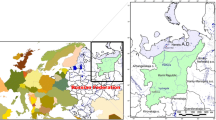Abstract
The Tibetan Plateau (Qinghai-Xizang Plateau) is a unique biogeographic region in the world, where various landscapes, altitudinal belts, alpine ecosystems, and endangered and endemic species have been developed. A total of 26 altitudinal belts, 28 spectra of altitudinal belts, 12,000 species of vascular plant, 5,000 species of epiphytes, 210 species of mammals, and 532 species of birds have been recorded. The plateau is also one of the centers of species formation and differentiation in the world To protect the biodiversity of the plateau, about 80 nature reserves have been designated, of which 45 are national or provincial, covering about 22% of the plateau area. Most of the nature reserves are distributed in the southeastern plateau. Recently, the Chinese government has initiated the “Natural Forests Protection Project of China,” mainly in the upper reaches of the Yangtze and Yellow rivers. “No logging” policies have been made and implemented for these areas.
Similar content being viewed by others
References
Chang D H S, 1981. The vegetation zonation of the Tibetan Plateau.Mountain Research and Development, 1(1): 29–48.
Feng Zuojian, Cai Guijin, Zheng Changlin, 1986. The Mammals of Tibet. Beijing: Science Press. (in Chinese)
Huang Ninglu, 1992. Evaluation on the germplasm resources of wheat in Tibet. In: Proceedings of the First Symposium of the Qinghai-Tibet Plateau Association. Beijing: Science Press, 170–179. (in Chinese)
Li Bosheng, 1994. The characteristics and conservation of biodiversity of the Qinghai-Tibet Plateau. In: Proceedings of the First Conference on National Parks and Protected Areas of East Asia and the 41st CNPPA/IUCN Workshop. Beijing: China Environmental Science Press, 635–661. (in Chinese)
Liao Ke, 1990 (ed.). The Atlas of the Tibetan Plateau. Beijing: Science Press. (in Chinese)
Song Chaosu, 2000 (ed.). An Outline of China’s Nature Reserves. Hangzhou: Zhejiang Youth Press. (in Chinese)
Xu Yanwen, 1992. Genetic resources of barley and their utilization in the Tibetan Plateau. In: Proceedings of the First Symposium of the Qinghai-Tibet Plateau Association. Beijing: Science Press, 180–187. (in Chinese)
Wang Jinting, 2000. Biodiversity: biota and biocoenose. In: Zheng Duet al. (eds.), Mountain Geoecology and Sustainable Development of the Tibetan Plateau. Dordrecht/Boston/London: Kluwer Academic Publishers, 135–157.
Wu Sugong, 1996. The characteristics, formation, evolution of the flora. In: Formation and Evolution of the Qinghai-Tibet Plateau. Shanghai: Shanghai Science and Technology Press. (in Chinese)
Wu Sugong, Feng Jianxin, 1992. Characteristics, exploitation and protection of biological resources in the Tibetan Plateau. In: Proceedings of the First Symposium of the Qinghai-Tibet Plateau Association of China. Beijing: Science Press. (in Chinese)
Ye Duzheng, Gao Youxi, 1979. Meteorology of the Tibetan Plateau. Beijing: Science Press. (in Chinese)
Zheng Du, 2000. Three dimensional differentiation of natural zonation. In: Zheng Duet al., (ed.), Mountain Geoecology and Sustainable Development of the Tibetan Plateau. Dordrecht/Boston/London: Kluwer Academic Publishers, 47–69.
Author information
Authors and Affiliations
Rights and permissions
About this article
Cite this article
Bai-ping, Z., Xiao-dong, C., Bao-lin, L. et al. Biodiversity and conservation in the Tibetan Plateau. J. Geogr. Sci 12, 135–143 (2002). https://doi.org/10.1007/BF02837467
Received:
Accepted:
Issue Date:
DOI: https://doi.org/10.1007/BF02837467




